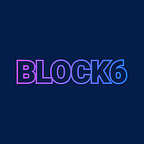The Injective Protocol and Its Working Principles
The Injective Protocol is a layer-2 decentralised derivatives exchange protocol that is decentralised. Injective offers permissionless trading on any derivative market, letting users build and trade on any derivative market they want.
The Cosmos-SDK, which hosts Injective’s decentralised exchange system, is used to implement the underlying protocol on top of Tendermint.
Cosmos, which uses the Tendermint-based BFT Proof-of-Stake consensus method, underpins the Injective protocol. Therefore, users can delegate their tokens to validators using this consensus technique. However, unlike Delegated Proof of Stake, delegators are only involved in a restricted way.
Core Elements of the Injective Protocol
The injective protocol system comprises three key components that support and enable the Protocol’s Decentralised Exchange functionality. These components are:
1. The Injective Chain: The Injective Chain is a permissionless public blockchain network that allows any individual or organisation to participate in consensus. The Injective Chain is an Ethereum-connected layer-2 sidechain and Cosmos Zone.
The Injective Chain, built on top of Tendermint, enables the transfer and exchange of Ethereum-based assets. The fundamental goal of the Injective Chain is to power the Injective Trading protocol, which is a decentralised peer-to-peer spot and derivatives exchange.
The Injective chain intends to address the scaling and throughput restrictions that many Layer 1 blockchains have while still allowing developers to use their existing Ethereum development kits. Users of the Injective Protocol can access different protocol modules with the Injective Chain DEX. Some of these modules include.
a. Exchange: This module allows users to build and trade new spots and derivatives markets. Order book administration, trade execution, order matching, and settlement are all automated on the chain.
b. Insurance: With this module, underwriters who support the exchange’s derivatives markets are supported by insurance.
c. Oracle: This module collects real-world price data (like traditional stock market data) to determine asset prices on the INJ exchange.
d. Peggy: This module connects the Injective Protocol to the Ethereum blockchain, allowing holders of ERC-20 tokens to convert them to Cosmos-native currency.
e. Auction: With this module, token holders can bid on baskets of tokens that have accrued due to exchange trading fees. The protocol burns (or removes from circulation) the INJ tokens paid by the highest bidder.
2. The Injective Exchange Client: The Exchange is a prominent 0x protocol-based order book model exchange. The Injective team open-sourced all components of the exchange to create a platform that was transparent and accessible.
The user interface, smart contract functionality, and order book management system are open-source components. The Injective exchange, unlike traditional exchanges that act as intermediaries to the cryptocurrency space, turns an exchange into a decentralised public utility.
What sets the Injective exchange apart is that it makes every aspect of a decentralised exchange available to the general public. Everything is open and free, from the front-end exchange interface to the back-end infrastructure to order book liquidity.
By putting a Trade Execution Coordinator in place, Injective Exchange hopes to eliminate trade front running (TEC). Instead, the TEC introduces a delay to ensure that fresh orders do not prioritise older ones, seeking to compensate for advanced information gained by some market makers or bots.
3. Injective Ethereum Bridge: The Injective Ethereum bridge allows the Injective Chain to offer an on-chain bidirectional token bridge without trust. Using this method, holders of ERC-20 tokens on Ethereum can instantly convert their tokens to Cosmos-native currency on the Injective Chain and vice versa.
The Injective Bridge allows for lightning-fast transfers and is currently one of the most cost-effective alternatives (average transaction cost of $0.02 on the Injective Chain). Furthermore, all transactions are quickly confirmed because the Injective network uses Tendermint-based Proof-of-Stake (PoS) consensus.
In addition, when compared to any other Ethereum scaling solution, the Injective Bridge enables the fastest withdrawals. The INJ-ETH bridge was created with the end-user in mind, resulting in a user-friendly interface for cross-chain transfers.
Many major assets are pre-populated, but users can use the easy drop-down User Interface to enter any new ERC20 token address.
Contents distributed by Learn.Block6.tech
👉 Telegram — Fresh ideas
👉 Twitter — Latest articles
